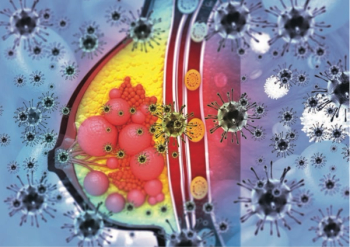
Strong Response to Neoadjuvant Gemzar/Epirubicin/Abraxan
A triplet of biweeklyneoadjuvant gemcitabine (Gemzar),epirubicin (Ellence), and nabpaclitaxel(Abraxane) (GEA) was "exceptionally well tolerated" andproduced a 94% overall pathologicresponse in women with locallyadvanced breast cancer.
A triplet of biweeklyneoadjuvant gemcitabine (Gemzar),epirubicin (Ellence), and nabpaclitaxel(Abraxane) (GEA) was"exceptionally well tolerated" andproduced a 94% overall pathologicresponse in women with locallyadvanced breast cancer (abstract3069). Denise A. Yardley, MD,discussed the results. The phase IIstudy enrolled 48 women with T1c–T4d and/or N0-3 disease. Most (81%)were HER2-negative. Patients receivedG at 2,000 mg/m2, E at 50 mg/m2, andA at 175 mg/m2 every 14 days for 6cycles, followed by surgery. Postoperatively,they received 4 cycles of G at2,000 mg/m2 and A at 220 mg/m2 every14 days. Patients were given G-CSFsupport on day 2 of all cycles.Pathologic responses in 35 evaluablepatients were pCR (in primary breastand lymph nodes) in 20% and pPR in74%, for an overall pRR of 94%; theremaining 6% of patients had stabledisease. The incidence of grade 3/4neutropenia was 8% and of thrombocytopeniawas 6%. The incidence ofanemia was 2%, and 2% requiredtransfusions (of platelets, RBCs). Febrileneutropenia did not occur. Only onepatient experienced a grade 4nonhematologic toxicity (fatigue). Themost common nonhematologic toxicitywas arthralgia (10.5%), followed byfatigue and hyperglycemia (6% each),and edema and thrombosis (2% each).There were no cases of grade 3/4 neuropathy.Accrual is continuing, and correlationof tumor expression of SPARCand degree of response will be reportedat a later date.
Newsletter
Stay up to date on recent advances in the multidisciplinary approach to cancer.

















































































